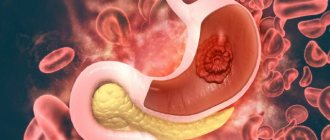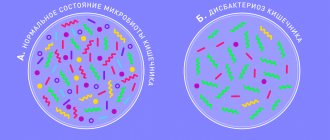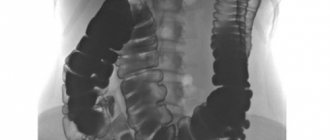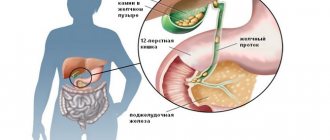A healthy person rarely thinks about illness. However, a failure can occur in any body, which will be accompanied by disturbances in life support systems. This possibility cannot be completely excluded. If at a doctor’s appointment a word such as “malignancy” was heard (we’ll tell you what this means a little later), then a person far from medicine is unlikely to understand what we are talking about. Is this life-threatening? What causes the complication? What symptoms accompany the process of malignancy and how is it diagnosed? It is these questions that can be answered in this article.
Malignancy – what is it?
A healthy human body works like a clock. It constantly generates and develops cells that participate in important processes. However, when there are deviations, pathological changes in structure occur in them. This results in the appearance of tissue material. This phenomenon in medicine is called malignancy. During its development, a change in the genetic program occurs. Cell reproduction by division leads to rapid tissue growth.
This process is progressive. When it is activated, tumors of a benign or malignant nature are formed in the body. At the initial stage, it is quite difficult to diagnose cell malignancy. This period is asymptomatic. The patient does not feel pain or discomfort, so he is not even aware of the development of the disease.
If the body has already started the process of degeneration of malignant cells, then it is not possible to stop it or regulate it in any way. Doctors consider it irreversible. Unfortunately, in this case, new foci (metastases) appear very quickly, affecting different organs. It is their rapid growth that most often leads to death.
Cell malignancy can be caused by various factors, both internal and external. This phenomenon may also have genetic causes. When diagnosed in the early stages and stopping the rapid proliferation of cells, you can count on a favorable prognosis.
Stages and stages of development of malignancy
Any malignancy begins with a genetic breakdown (mutation) in the cell. In principle, such cells are constantly produced in the body, but they are tracked by the immune system and destroyed by apoptosis. However, situations are possible when, as a result of a mutation, genes responsible for turning off apoptosis are simultaneously activated and genes that turn on apoptosis are blocked. As a result, such a cell does not die, but, on the contrary, continues to divide. This stage of malignancy is called initialization.
This is followed by promotion, during which oncogenes are activated and, as a consequence, active division of transformed cells occurs. But this is still not enough for the development of cancer. Damaged cells can develop, mature (differentiate) and perform the functions of the tissue in which they are located.
For complete malignancy, differentiation is required. Typically, this process is associated with the action of microRNAs and a lack of cytokines, which contribute to the transition of the cell to a higher level of differentiation. The number of damaged cells grows, and an area of altered tissue gradually forms. As a result, a tumor forms in its place.
Damaged cells are unstable. First, the neoplasm has a predominant clone of cells, which forms the basis of the tumor - the stem line. But in the absence of appropriate control, mutations form like a snowball, and other clones begin to form. This mechanism partly explains why, over time, antitumor drugs cease to have an effect - the previous clone of cells that was sensitive to this treatment is replaced by another, more resistant one.
The fourth stage of malignancy is called tumor progression. Cancer cells gain complete autonomy and behave as they want. They do not respond to the microenvironment. The tumor can grow into surrounding organs and tissues, including lymphatic and blood vessels. Along them, malignant cells migrate throughout the body and, under certain conditions, give rise to new tumor foci - metastases.
Morphologically, the following stages of malignancy are distinguished:
- Tissue hyperplasia is the excessive formation of structural elements of tissue.
- Focal proliferation is the growth of tissue through cell division.
- Benign neoplasms.
- Dysplasia is an atypical transformation of tissue cells.
- Carcinoma in situ is a malignant tumor that does not grow into the underlying layers of tissue.
- Invasive malignant neoplasm.
Causes
Having understood the definition of the medical term “malignancy”, what kind of phenomenon it is and what features it has, it is necessary to consider the reasons that cause this process. Unfortunately, scientists around the world are trying to develop a cure to fight cancer. However, the developed methods currently cannot guarantee a 100% result. Why? Most likely, scientists cannot yet identify the exact reasons that provoke deviations in cell development. Several hypotheses have now been presented. It is worth noting that none of them has genuine confirmation. But each one says that malignancy occurs due to the simultaneous impact of several unfavorable factors. Scientists distinguish internal and external causes. The first include the following:
- Inflammatory chronic processes.
- Impaired functioning of the immune system.
- Pathology of the thyroid gland.
- Fungal and viral diseases.
- Nervous disorders, stress.
- Chronic feeling of overwork and fatigue caused by disturbances in the functioning of the autonomic system.
- Hereditary predisposition.
- Unstable mental state.
- Hormonal imbalance.
External causes that can provoke malignancy include:
- Exposure to X-ray equipment (dose several times higher than normal).
- Ecology problems, environmental pollution.
- Abuse of junk food containing large amounts of dyes, carcinogens and other elements.
- Exposure to solar radiation on the body (insolation).
- Poisoning with chemically active substances.
Properties of a cancerous tumor
A malignant tumor has a number of characteristics that healthy cells and tissues do not have:
- Rapid growth, which is accompanied by compression or damage to surrounding tissues;
- Germination into surrounding tissues (infiltration);
- Spread throughout the body and formation of new tumor foci;
- Production of toxins;
- “Disobedience” to the immune system;
- High tendency to mutations;
- Significant reduction in cellular maturation;
- Severe cellular and tissue atypia;
- Stimulating the growth of blood vessels.
Signs
Most often, the symptoms that accompany this process vary depending on where the pathology is present. However, scientists have identified some common signs of malignancy observed in all types of diseases.
- Changes in cells and the appearance of deviations in their development.
- Formation of metastases.
- Failure of a genetically programmed program, leading to changes in the structure and functionality of the cell.
- Activation of the ability to divide and rapid growth.
- Formation of various cancer cells.
- Pronounced contradictory properties.
Competition "bio/mol/text"-2019
This work was published in the “Free Topic” category of the “bio/mol/text” competition 2019.
The general sponsor of the competition and partner of the Skoltech nomination is the Skoltech Center for Life Sciences.
Competition sponsor: the largest supplier of equipment, reagents and consumables for biological research and production.
The audience award was sponsored by BioVitrum.
"Book" sponsor of the competition - "Alpina Non-Fiction"
The hounds are still playing in the yard, but the game cannot escape, no matter how it rushes through the forests. Franz Kafka
Biomolecule has published many articles on the molecular basis of carcinogenesis. But each of them, as a rule, is devoted to one aspect of this pathological process, while among our readers there are probably people who would like to get a general idea of the cancer cell before going into details. Anna Batueva's review article successfully fills this gap and provides a general understanding of the key molecular mechanisms of malignant transformation. - Ed.
Malignancy as the acquisition of malignant features by healthy cells, which we will discuss in detail below. The process of malignant change can be likened to the game from Kafka's quote, because the cell, once set on this path, will not be able to return and get its cellular health back. Medicine, followed by molecular biology, played an important role in understanding the basics of cell degeneration and their further functioning. But let's start with the origins of the history of cancer...
Diagnostics
So, malignancy – what is it, a death sentence or a call to fight? Many people give up after learning about their diagnosis. And that's wrong. If malignancy is detected in the early stages, the patient’s chances of long-term remission are significantly increased. Of course, no one can guarantee such a result in an advanced form of the disease, so it is recommended to undergo regular examinations with doctors.
In order to recognize the onset of the pathological process, the patient is prescribed a comprehensive examination, which includes:
- Examination by a specialist.
- Questioning the patient about symptoms and health status, collecting other information (history).
- Analysis of biological material (biopsy).
- ECG.
- Examination of the digestive organs (allows you to determine the malignancy of the ulcer, chronic and inflammatory processes).
- Bacteriological research.
- General analysis of urine, blood and feces. The latter is also examined for occult blood.
- If the doctor suspects skin cancer, epiluminescence microscopy is prescribed.
- Radiography.
- Ultrasound.
- Smear.
- Full computer diagnostics. Unfortunately, it is quite expensive, so it is rarely prescribed.
- Hysteroscopy (if pathology of the pelvic organs is suspected).
- Laparoscopy.
Prevention of malignancy of benign tumors, polyps and ulcers - how to protect yourself from cancer?
There are a number of specific recommendations that should be followed to prevent the development of cancer:
- Avoid prolonged contact with direct sunlight, and also avoid visiting solariums. This will help maintain youthful skin and reduce the risk of melanoma.
- Eat right. Food should be, first and foremost, healthy. If the doctor deems it necessary, additional vitamin and mineral complexes are prescribed.
- To refuse from bad habits.
- Treat any illnesses that arise in a timely manner. But you should not self-medicate - taking certain medications can lead to exacerbations.
- Limit yourself from contact with aggressive chemical agents as much as possible.
- Try to protect yourself from stressful situations.
Has a cure for cancer been found?
You should not ignore routine medical examinations with doctors. This is especially true for those who have cancer patients among their close relatives - they are at increased risk and must carefully monitor their lifestyle.
Rate
—
Symptoms
It is impossible to identify common symptoms that raise suspicion of malignancy due to the fact that the pathology can be localized in different areas, affecting various organs, so the diagnostic criteria will vary. Let's look at the symptoms using specific examples.
Papillomas and moles (nevus):
- The formation does not have clear boundaries, blurring and smoothing are observed.
- The base of the mole becomes significantly denser.
- Changing the shade, up to the appearance of new colors.
- The patient developed a feeling of discomfort in the area of the tumor.
- During the process of malignancy, burning and itching are felt.
- Bloody or watery discharge appears.
Stomach ulcer:
- Accompanied by constant pain.
- The patient is rapidly losing weight.
- When lying down, the pain spreads to the back area and becomes more intense.
- Decreased appetite or its complete absence.
- Weakness and fatigue appear.
- Anemia.
- Pain on palpation is non-local.
- Menstrual cycle disorders in women.
- Patients may experience purulent discharge.
Ovarian malignancy:
- The appearance of discomfort in the lower abdomen and lumbar region.
- The pain is aching in nature.
- There is a feeling of fullness.
- There is a frequent urge to empty the bladder.
- Swelling of the legs.
- Constipation or diarrhea.
Thyroid:
- Pain appears in the larynx area.
- Enlargement of the thyroid gland.
- Disruption of the cardiovascular system.
- Sudden increase/decrease in weight.
- Inflammation of the lymph nodes is observed in the cervical region.
- Nervous disorders appear, expressed by constant anxiety.
- Sleep is disturbed.
- High blood pressure.
Polyps
Malignization of a polyp is a change in epithelial cells, which leads to the fact that a benign neoplasm acquires a malignant form (adenocarcinoma). Any organs that have a mucous membrane are affected. These include:
- oral and nasal cavities;
- uterus;
- bladder;
- anus, etc.
Organs are affected by both single polyps and large conglomerates. In the first case, the probability of malignancy is no more than 7%, in the second it can reach 95%. This is mainly influenced by the location.
Diagnosis of education is carried out in several ways. Sometimes a polyp can be excised from a patient right in the clinic and a histological analysis can be performed. In other cases, with extensive lesions, abdominal surgery is prescribed.
In order to prevent the transformation of a benign tumor into a cancerous tumor, doctors recommend removing polyps endoscopically (polypectomy) at the initial stage.
Part 2: What causes a cell to change?
In this chapter we will examine the causes of malignant cell degeneration. The first trigger for this change to begin is a mutation in the DNA.
Important factors that cause mutations and provoke cancer degeneration are ionizing radiation, exposure to ultraviolet rays, the influence of cytotoxic substances that damage DNA (these include narcotic substances and some medications - for example, cisplatin, which damages the structure of the double helix) and organic poisons.
But not all DNA damage will necessarily lead to the appearance of a cancer cell, but only those that affect certain genes. Three groups of genes play the most important role in carcinogenesis: proto-oncogenes, oncogenes and tumor suppressor genes.
Proto-oncogenes
Proto-oncogenes are “healthy” precursors of oncogenes, which, as a result of mutation, can cause the development of a tumor. Such causes are various mutations or gene overexpression. As a rule, proto-oncogenes encode proteins involved in the processes of the cell life cycle. As a result of mutations, disruptions in the regulation of cell division and differentiation appear.
The main changes occurring with proto-oncogenes:
- Translocation is the transfer of genetic material from one chromosome to another. Often, as a result of such rearrangement, a new chimeric gene appears that has carcinogenic properties. A typical example of a chimeric oncogene is BCR-ABL, which appears on the “Philadelphia chromosome” (Fig. 1), the result of a reciprocal translocation between regions of chromosomes 9 and 22 [3]. This mutation leads to the development of chronic myeloid leukemia, which is now successfully treated. Also, in 90–95% of cases of Ewing's sarcoma, a malignant bone tumor that mainly affects long bones, a translocation is found between chromosomes 11 and 22, which leads to the formation of a gene encoding the pathological protein EWS/FLI1.
- Amplification is an increase in the number of copies of a DNA section. Amplification is often a mechanism for activating oncogenes. For example, amplification and, as a consequence, overexpression of the N-Myc protein gene lead to the development of an aggressive type of neuroblastoma.
- Deletion is a mutation in which a section of a chromosome is lost. Deletion of 13q-Rb (deletion of a section of the large arm of chromosome 13 containing the gene) leads to the development of retinoblastoma (a malignant tumor of the eye) in children [4].
- Replacement of one nucleotide with another. The BRAF V600 mutation in melanoma replaces valine with glutamic acid in the BRAF enzyme.
- An insertion is a genetic change in which a new sequence is inserted into the DNA. For example, insertions of Alu elements—short repeats in DNA that do not code for any proteins—are the cause of such forms of cancer as breast cancer and Ewing's sarcoma [5].
Figure 1. The chimeric BCR-ABL gene is formed by merging a section of chromosome 9 carrying the ABL gene with a section of chromosome 22 carrying the BCR gene
"Chronic myeloid leukemia (CML)"
In some cases, carcinogenesis is triggered by viruses. Oncogenes in the genome of viruses are previously hijacked normal genes in host cells that have become malignant over time. When such oncogenic viruses enter a cell, information from the viral DNA or RNA begins to be read, oncogenic proteins accumulate in the cytoplasm and the process of degeneration begins.
Oncogenes
Oncogenes are genes whose activity stimulates the formation and development of a malignant tumor. As mentioned above, the first viral oncogene was discovered in 1979.
Biochemical products of oncogenes
Oncogenes encode proteins with different structures and functions. The main products of oncogene activity include:
- Growth factors . Cancer cells produce proteins that can cause cell proliferation and differentiation. The best known growth factor is HER2, encoded by the ERBB2 gene. Mutations and overexpression of this gene are found in breast cancer and are associated with extreme tumor aggressiveness. Overexpression of the gene leads to the launch of protein cascades responsible for cell division. Constant signals for division cause uncontrolled proliferative activity of cells and their malignant degeneration.
- GTP-binding proteins . Guanosine triphosphate-binding proteins are involved in many cellular processes: signal transmission, transport of metabolites within the cell, etc. The first GTP-binding proteins to be discovered were proteins of the Ras family - products of the RAS oncogene. When continuously produced, they cause malignant growth. The most studied effector of Ras is RAF, which triggers the MAPK protein cascade responsible for cell division and proliferation [6].
- Membrane receptors . Receptors with tyrosine kinase activity play a major role in oncogenesis. They serve to bind to growth factors. These include the epidermal growth factor receptor, the increased synthesis of which leads to cell degeneration.
- Oncogenic protein kinases . Protein kinases are a group of enzymes that modify proteins by phosphorylation (the addition of a phosphoric acid residue). Protein kinases regulate apoptosis, cell growth and differentiation processes. Disturbances in their work lead to a malfunction in the cell cycle and, as a consequence, to the development of cancer. For example, the protein kinase AKT1, responsible for inhibiting apoptosis, can cause cell degeneration when overproduced. It is also associated with the growth of blood vessels in the tumor, which helps cancer cells spread throughout the body and metastasize.
All of the above oncogene products are signals to trigger uncontrolled cell division. External factors no longer play any role in the life of the cell, because proliferation is triggered by internal signaling proteins.
Genes and proteins - suppressors
In a healthy cell, there are protective mechanisms that monitor processes and regulate the cell cycle. Such mechanisms include the activity of tumor suppressor proteins: p21, p53, pRb, PTEN, etc.
The p53 protein is the most studied suppressor protein. It is a product of the TP53 gene, mutations of which are found in many tumor cells [7]. p53 is synthesized in all cells of the body, but is activated only when DNA is damaged. This protein is able to stop the cell cycle and prevent further cell division until DNA repair occurs. With severe damage, it can also trigger the process of apoptosis.
One of the main functions of p53 is to maintain the genetic identity of all cells in the body. If this protein does not work correctly, the cell is able to divide even with damaged DNA, which increases the likelihood of mutations and the accumulation of defective oncogenes. An important role in the suppression of p53 is played by the MDM2 protein, which normally regulates the activity of p53. However, when oversynthesized, it binds to p53 and inhibits its antitumor effect.
Epigenetic factors in cancer
Epigenetic events are important factors in carcinogenesis. Epigenetics studies processes that affect gene activity but do not change the structure of DNA. These include changes in DNA methylation.
Methylation is the addition of a methyl group to nucleotides in special, strictly defined regions of the genome called CpG islands. This change does not affect the structure of the molecule, but may affect the expression of individual genes. In particular, if there are many methyl groups in a DNA section, then transcription of this section stops.
Methylation is especially active during the embryonic period of life, and in an adult, about 2% of the genome is methylated. Normally, the balance between methylation and demethylation is strictly regulated and maintained, but in old age, methylation processes begin to predominate, which can ultimately lead to carcinogenesis. During oncogenesis, hypermethylation of CpG islands occurs, which leads to general genomic instability and the accumulation of even more mutations. In most cases, methylated regions are promoters and affect the activation or, conversely, inactivation of genes, which is similar in appearance to the effect of point mutations.
However, although disturbances in epigenetic regulation accompany the development of malignant transformation, they, as a rule, are not its root cause, but only one of the accompanying factors.
Separately, each of the above violations cannot provoke cancerous degeneration. They all work together and harmoniously. Thus, oncogenesis starts only if oncogenes are simultaneously activated and suppressor genes are inactivated in both copies of DNA. The theory of double carcinogenesis was first expressed by Alfred Knudson, who studied retinoblastoma: “Apparently,” he wrote, “two types of genes play a key role in the occurrence of cancer in children. The first, oncogenes, acts through increased, abnormal activity... The second class, antioncogenes, is recessive in oncogenesis: cancer occurs only when both normal copies are deleted or altered” [8]. During its life, a cancer cell accumulates an increasing number of mutations, so the cancer genome is often very different from the genome of a healthy cell (Fig. 2).
Figure 2. Cancer genome. During its life, a cancer cell accumulates a huge number of mutations and is often characterized by polyploidy.
[13]
Stomach ulcer
Malignancy of gastric ulcers is common. According to statistics, in approximately 15% of patients the pathology has the ability to degenerate into a cancerous tumor. Why is this happening? Doctors still cannot give a definite answer. Most likely, the reasons that lead to malignancy are improper (unbalanced) nutrition. The risk increases significantly if the patient neglects fruits and vegetables, or abuses smoked and fried foods. Doctors also do not rule out a hereditary predisposition.
Part 3. Physiological consequences of malignancy
The main consequence of malignancy is cellular immortality. It can be maintained in several ways: activation of the telomerase enzyme, blocking regulators of the mitochondrial apoptosis pathway, and in some cases, activation of the ALT mechanism (alternative lengthening of telomeres [14]).
The flip side of “eternal youth”
Cellular immortality of cancer cells was first demonstrated in 1951 on the HeLa cell line taken from Henrietta Lacks, who soon died of cervical cancer (Fig. 3) [9].
Figure 3. The HeLa cell line is an “immortal” cancer cell line. Since the 50s of the last century, it has been used to study the behavior of cancer cells and identify new anticancer drugs.
National Center for Microscopy and Imaging Research
As a rule, malignancy is accompanied by activation of the telomerase enzyme. At the ends of chromosomes there are short repeating sections of DNA called telomeres [10]. After each division, telomeres are shortened, which ultimately leads to their complete disappearance and the inability to continue division. The number of possible divisions for a cell is called the Hayflick limit. The action of telomerase is to restore telomeres and make the cell virtually immortal, allowing it to divide indefinitely. There are normal cells that also express telomerase. These are cells that need to divide frequently: germ cells, stem cells and intestinal epithelial cells. However, telomerase is active in the vast majority of cancer cells, which plays an important role in their life cycle.
On the other hand, in some malignant cells, along with active telomerase, there is the so-called alternative lengthening of telomeres, or ALT for short [11]. In ALT, homologous recombination of the terminal regions of chromosomes occurs (Fig. 4). Normally, recombination occurs during the process of meiosis, but cancer cells have learned to complete telomeres using the telomeres of another chromosome as a template [12].
Figure 4. The principle of ALT action based on homologous extension of telomere ends. This mechanism of “immortality” is fundamental for a number of tumors.
[14]
It is important to note that cancer immortality is controlled not only by telomeres, but also by inhibition of apoptotic pathways, the main one of which is the mitochondrial pathway. Normally, mitochondrial proteins exit the mitochondria into the cytoplasm and form an apoptotic complex - apoptosome , which triggers apoptosis. If regulatory proteins, which include proteins of the BCL-2 family, do not work correctly, the release of apoptotic proteins is disrupted, which leads to a failure in the process of apoptosis. In cancer cells, abnormalities in the functioning of the BAX and BAK proteins, as well as the expression of cell death inhibitors, have been detected.
Clinical picture
Malignancy of the stomach has the following clinical picture:
- Decreased activity.
- Refusal of meat food.
- Decreased appetite.
- The intensity of pain in the upper abdomen increases significantly.
- The body stops responding to antispasmodics.
- A persistent feeling of nausea, often accompanied by vomiting.
- During belching, an unpleasant odor appears.
- The skin turns pale.
- There is severe exhaustion.
- There is a feeling of heaviness in the stomach.
- The occurrence of pain no longer depends on food intake.
Factors when the transformation of benign tumors into malignant ones is most likely
There are a number of conditions in which the risk of malignancy increases sharply:
- Multiple polyps, which are familial in nature and constantly recur. If these formations occur in the gastrointestinal tract, an unfavorable factor is regular irritation of the polyp by gastric juice.
Also a great danger is a polyp in the uterus that occurs in women after menopause. In addition, an important point is the size of the growth - if its diameter reaches 30 mm, the likelihood of malignancy is quite high. - Chronic stomach ulcers caused by the bacterium Helicobacter pylori. If a person does not follow a special diet and is regularly under the influence of carcinogens, inflammatory processes in the stomach constantly make themselves felt.
Over time, all this leads to atrophy of the walls of the stomach, which cannot but affect the structure of the cells. - Moles on the skin, which are subject to frequent external influences: friction against clothing, solar radiation, injury, etc.
- The presence of a benign neoplasm. Not every tumor can become malignant. Here everything will depend on the nature of the pathological formation. For example, a lipoma almost never becomes malignant. But women with a history of adenomatous polyps in the uterus are at increased risk.
- Dysplastic changes in the body.
Adenoma
Malignancy of adenoma poses a great danger to human life. A tumor can develop in different organs. The probability of malignancy reaches 75%. If patients with stomach cancer have an adenoma, then the risk of malignancy is 50-60%. In many ways, everything will depend on the size of the education itself. Those with a diameter of more than 2 cm are most susceptible to degeneration.
If an adenoma is detected, it is recommended to visit a doctor regularly. Treatment for the patient can be prescribed either surgical or complex. Everything will depend on the stage of the disease.
Papilloma
The human papillomavirus has about 70 varieties. Some of them are predisposed to malignancy, so the patient's risk of malignancy increases significantly. Under certain conditions, this virus can cause skin cancer. Doctors diagnose papilloma oncogenesis much less frequently than in cases with other neoplasms. The beginning of the malignancy process is indicated by the following symptoms:
- Changes in shape and size (rapid growth).
- The top layer is broken.
- Discharge appeared.
- Education has changed in color.
- There is severe itching and burning.
The process of degeneration of papilloma can be activated by inflammatory processes that have already become chronic, hormone imbalance and decreased immunity. If you experience the symptoms described above, it is recommended to immediately consult a doctor. Only he will be able to determine the malignancy of the formation. The patient is prescribed an examination, during which the likelihood of the presence of cancer cells is determined. Treatment is prescribed after confirmation of the diagnosis by an oncologist. Most often, pathological and benign papillomas are removed.
Leading clinics in Israel
Assuta
Israel, Tel Aviv
Ikhilov
Israel, Tel Aviv
Hadassah
Israel, Jerusalem
Despite the huge amount of research in the field of cancer, the true and unambiguous cause of cell malignancy has not been established. But, some statistics suggest that there are several factors due to which healthy cells become malignant. Let's look at them:
- Chemical compounds . The development of industry and infrastructure certainly affects the development of the economy and the improvement of living conditions of the population as a whole. But there is another side to the coin. Vehicles, industrial plants, factories, and heating systems emit polycyclic aromatic hydrocarbons into the atmosphere. Many of our favorite tobacco products and alcoholic beverages contain nitrosamines, some agricultural land treatment products use hydrazine, and industrial production is often a source of mineral fibers and asbestos. Of course, this kind of substance can provoke malignancy of cells;
- Sun rays , or rather their excess, most often provoke the occurrence of melanoma (skin cancer). Doctors are increasingly warning those with fair skin, especially, to avoid exposing their skin to sunlight for particularly long periods of time. You should not sunbathe for a long time at resorts and beaches, and you should also not abuse artificial tanning or solariums in pursuit of a beautiful skin tone. This often leads to irreversible consequences;
- Types of cancer such as leukemia and thyroid cancer are more common among workers in so-called hazardous industries, where ionizing radiation containing radioactive cesium, strontium, and iodine is used;
- Some viruses present in the human body can provoke the process of malignancy. These include the ATLV virus, Epstein-Barr virus, human papillomavirus and herpes virus type 2. These types of viruses can cause blood cancer, Burkitt's lymphoma and cervical cancer, respectively.
- Hormonal disorders . A decrease or increase in the amount of hormones in the human body leads to immune disorders and metabolic disorders, which can lead to malignancy;
- Genetic predisposition . According to statistics, if preventive measures against cancer are not followed, if someone in the family has developed malignant tumors, the likelihood of their occurrence is very high. This is especially true for colon cancer. If a person has congenital genetic abnormalities, such as, for example, Down syndrome, then in this category of people the risk of developing blood cancer is 11 times higher than in people who do not suffer from this syndrome;
- Gender of a person . Oddly enough, statistics indicate that the development of a particular type of cancer also depends on gender. Thus, women suffer more from thyroid cancer than men, while lung cancer is more common in men. Also very deplorable is the fact that the number of women suffering from genital and breast cancer is increasing.
- Bad habits . It has long been known that alcohol, cigarettes, fatty and spicy foods have a negative impact on our health. The cells of smokers are more susceptible to malignancy than those of non-smokers. According to statistics, smokers suffer from lung cancer 11 times more often than non-smokers.
- Errors in nutrition . Fatty, hot, spicy foods, a large amount of salt in the diet, and lack of fiber negatively affect human health and can also lead to cell malignancy.
All these factors, individually or in combination, to one degree or another influence the degeneration of cells into malignant ones.
Myoma
A benign fibroid tumor consists of connective tissue and muscle fibers. Its dimensions vary from a few millimeters to 10-15 cm. It is cultivated on the uterus (mucous membrane). Doctors diagnose tumor malignancy in rare cases - no more than 1% undergo malignancy. Myoma is heterogeneous in structure. What reasons can trigger its development?
- Heredity.
- Abortion.
- Diabetes.
- Endocrine system disorders.
- Taking hormonal drugs.
- Overweight.
- Nervous tension.
- Bad habits.
- Menstrual irregularities.
The risk group includes nulliparous women and those who violate the rules for using contraception.
Stages
If we take the morphological aspect, then the process of malignancy arises and develops as follows:
- An excessive number of structural elements are formed in the tissue (hyperplasia);
- Due to cell division, the tissue grows;
- A benign tumor forms;
- Healthy tissue cells begin to transform into atypical ones (dysplasia);
- A “Cancer in situ” situation arises: the resulting malignant neoplasm does not affect the underlying tissue layers
- The malignant tumor becomes invasive.
Treatment
Due to the fact that cell malignancy can occur in any organ, there is no clear treatment regimen. Therapy will depend on certain factors:
- degree and area of damage;
- form and type of disease.
A large number of people live with moles or papillomas that do not require treatment. Only if the cells begin to degenerate is it recommended to remove them to eliminate the possibility of oncogenesis. For these purposes, doctors may suggest electrocoagulation, laser therapy or cryodestruction.
When it comes to treating malignancy, the doctor selects a technique depending on which organ is damaged. Most often, complex treatment is prescribed, which includes surgical removal, radio-, chemo- and radiation therapy.
Today, science knows why polyps appear?
There is no single theory on this matter. There is an assumption that the mechanism of occurrence of polyps is based on a violation of the regeneration (healing) processes of the mucous membrane of internal organs.
Provoking factors include poor nutrition (an abundance of refined foods and a lack of fiber), Helicobacter pylori infection, dysbacteriosis, diverticular intestinal disease, and exposure to radiation.
The hereditary theory of the origin of polyps has been confirmed in relation to a large group of diseases - hereditary polyposis (Gardner's disease, familial adenoma, etc.). In approximately 15% of cases, colorectal cancer is familial.
Forecast
Malignancy does not always have a favorable prognosis. Currently, modern diagnostic methods make it possible to identify pathology in the early stages. Thanks to this, doctors achieve stable remission. The following factors influence the forecast:
- localization;
- stage of pathology;
- degree of malignancy;
- patient's age;
- correct treatment.
For example, when an ulcer becomes malignant, doctors do not give the most optimistic prognosis. But if a mole or papilloma degenerates, it is enough to simply remove it - and the person will be able to live fully into old age. The main thing is to understand that only timely diagnosis of the pathology and correctly prescribed treatment will help to avoid death.











